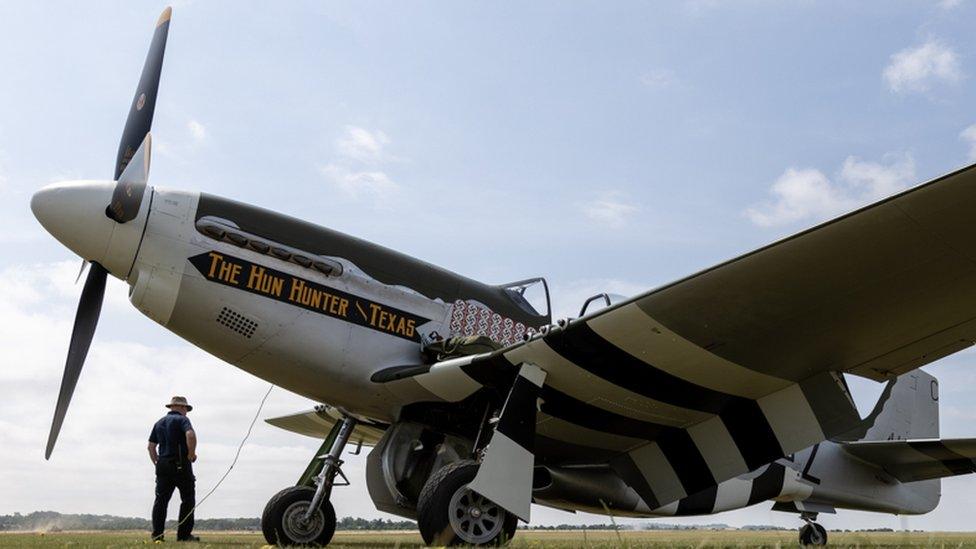Largest Spitfire gathering in 21st Century held in Duxford museum
- Published
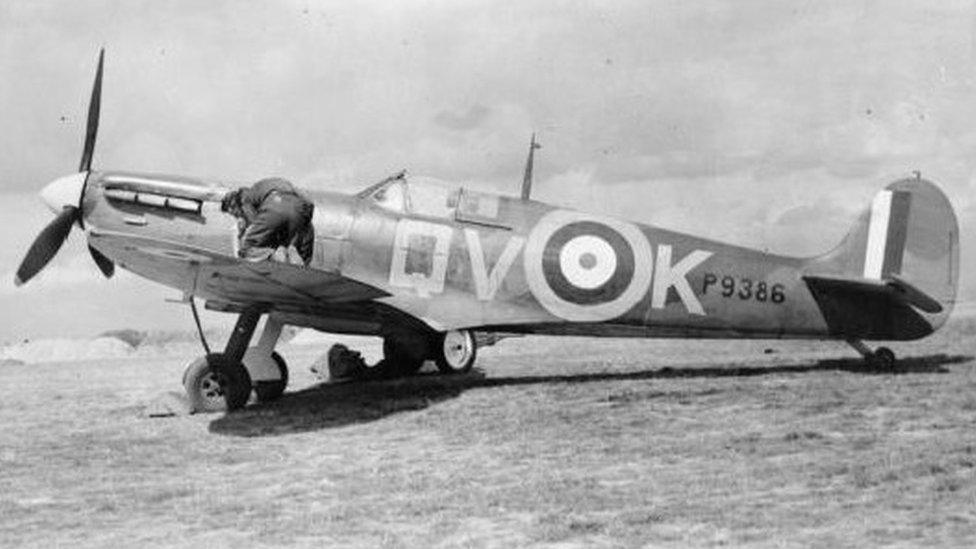
Spitfires like the Mk Ia P9368 QV-K of No.19 squadron have become an important part of British aviation history
Twelve Spitfires going on display at the aircraft's "home" are thought to be the largest number assembled under one roof in the 21st Century.
Duxford in Cambridgeshire was the base where an RAF squadron received the first operational aircraft in 1938.
Now an Imperial War Museum (IWM) site, its Spitfire: Evolution of an Icon exhibition traces the plane's development.
Curator, Adrian Kerrison, said the aircraft was an "icon of victory".
With its trademark elliptical wings and powerful Rolls Royce engine, the Spitfire has become an icon of British air history.
After the part it played in stopping a German invasion in the Battle of Britain of 1940, the aircraft was subsequently active in North Africa, Italy and elsewhere in Europe during the 1939-1945 conflict.
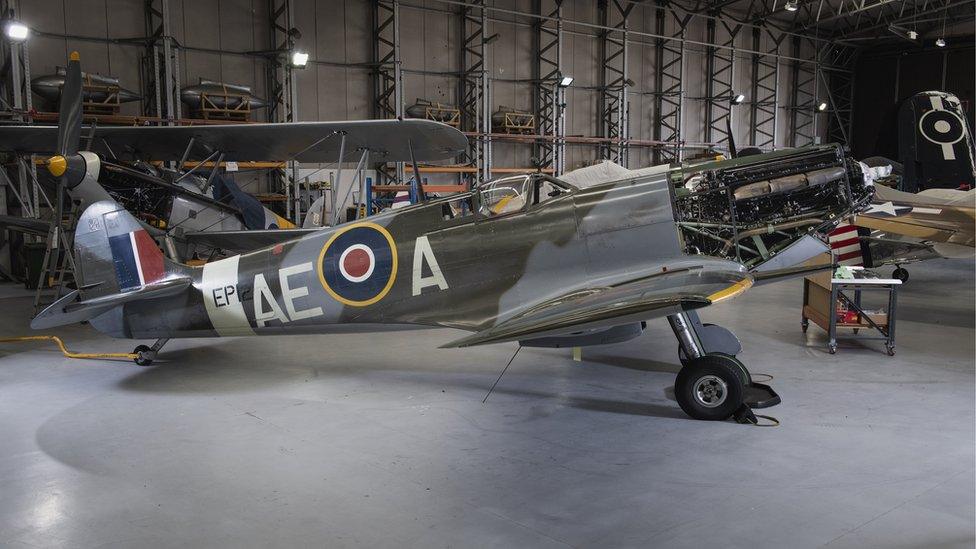
A Mark V Spitfire, which was active with the RAF from 1942, can be seen alongside a Mk IX, Mk XIV and others in Duxford's exhibition
Now, alongside IWM's own Mk Ia Spitfire, a number of private owners have loaned their aircraft to the museum. While visitors have been able to see more in the skies at the airfield, they can now get up close to a dozen from 10 years of production for the first time.
Mr Kerrison said the plane had gained legendary status due to its "role in history".
"The Spitfire became synonymous with hope and protection as the threat of German invasion loomed heavy over Britain," he said.
"Obviously it was instrumental in stopping the invasion in the Battle of Britain, but it was also one of the best fighter planes.
"After the Battle of Britain it continued and was the dominant British fighter plane in the Allied victory."
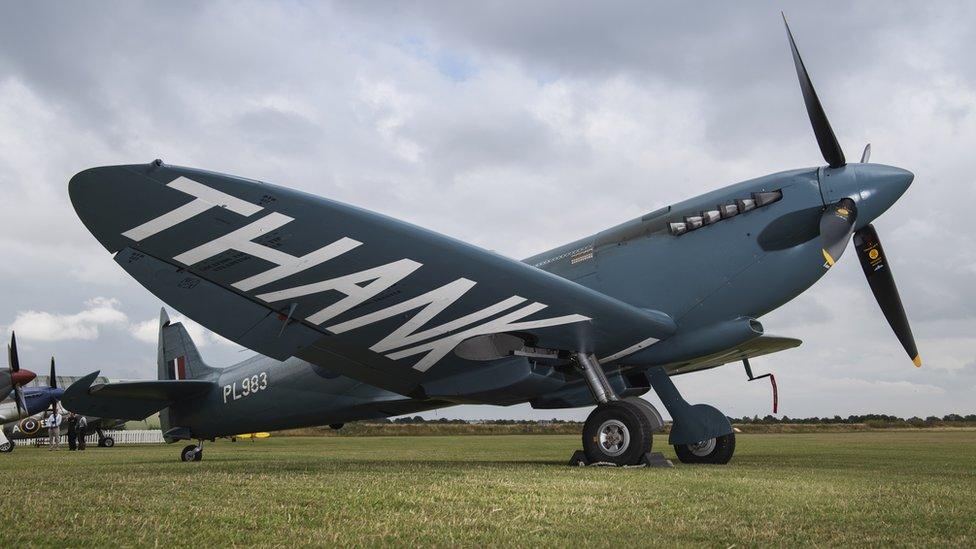
A photo-reconnaissance blue Spitfire PL983 L toured the country last year in tribute to the NHS
He added that even during the war, the plane "captured the hearts of the home front" and people from across Britain and the Commonwealth contributed to funding its production.
"It was cutting edge at the time and everyone knew how important it was," he said.
"Charity funds were set up to fund production and Spitfires were often named after the town or factory that raised the money. People wanted to feel like they were contributing to winning the war."

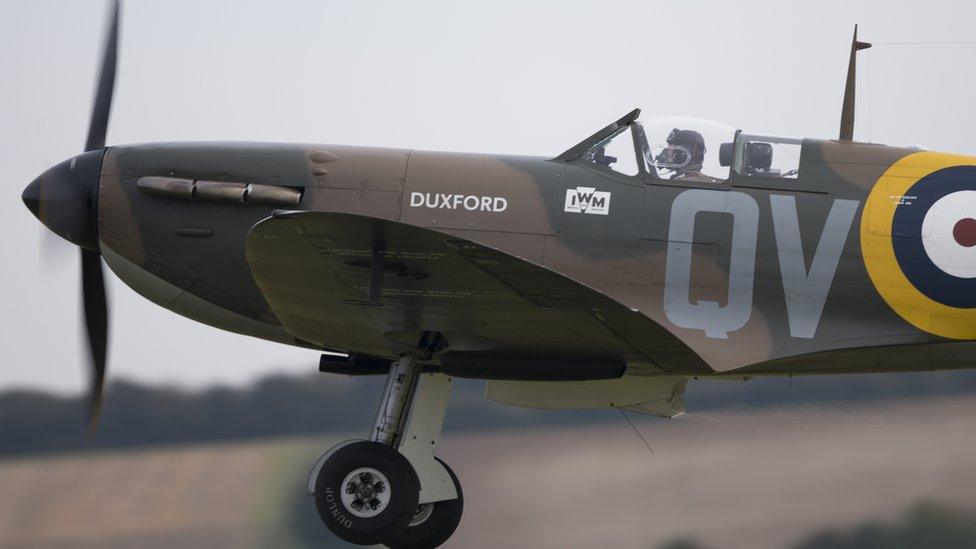
Adrian Kerrison said his favourite Spitfire story from the exhibition surrounded the Spitfire Mk I owned by IWM Duxford, which crash-landed on a beach near Calais in 1940
Spitfire Mark 1a N3200
Owned by IWM Duxford, this is one of a few remaining airworthy Spitfires to have seen World War Two conflict.
Built in 1939, it was issued to No. 19 Squadron at RAF Duxford in April 1940.
Squadron leader Geoffrey Stephenson piloted it on its first and only operation, as he led his squadron on a patrol to cover the evacuation of Allied forces from the beaches and harbour of Dunkirk, in May and June 1940.
He was shot down, but managed to land on the beach, evade capture and walk to Brussels.
Once there, he tried to get help from the American Embassy, but as the Americans were not in the war at that stage, they would not help so he handed himself in.
Stephenson remained a prisoner for the rest of the war, including a period spent at Colditz Castle.
His Spitfire was recovered from the French sands in 1986 after strong currents revealed it.
It was acquired in 2000 by Dr Thomas Kaplan and Simon Marsh, who commissioned Historic Flying Limited to undertake the intensive restoration work.
N3200 returned to the air in 2014 and was donated to IWM by Dr Kaplan and his family in 2015.

The curator said that "as far as we know" this is the largest collection of the aircraft to be seen together on display in the 21st Century.
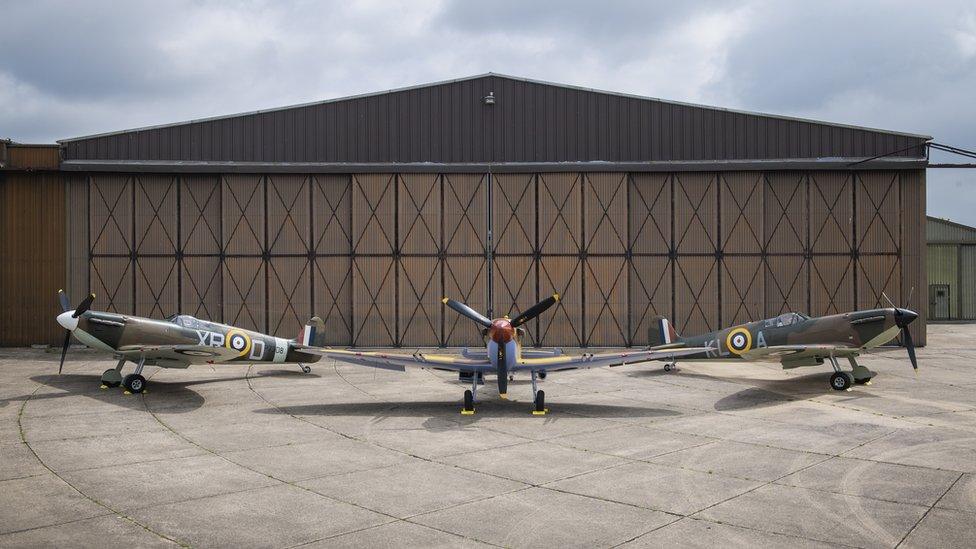
Three Spitfires (left to right - Mk Ia X4650, Mk V JG891, Mk Ia R213), like those in front of a hangar at IWM Duxford, were also used in wartime propaganda, "to show the world our elite fighting machine", Adrian Kerrison said
Accompanied by tours, talks and events, the exhibition traces the history of each model and how the aircraft developed during World War Two to keep pace with German technology.
"Each mark was better and different from the one before," Mr Kerrison said, adding that "the biggest change revolved around the Rolls Royce engine".
"There was parallel development of the Merlin engine and as that got bigger and more powerful, modifications were made to the aircraft design," he said.
"For example, the nose was enlarged so it would fit into it and then the tail and propellers had to be changed because of the power that the engine produced.
"After that, new wings were developed to hold more powerful armaments."
He said the first model had eight machine guns, but from Mark II onwards the wings were changed and heavier cannon introduced, with it eventually being able to carry bombs.
Mr Kerrison said it was "a great honour" for Duxford to be able to "bring together so many of them in one place for the first time and enable visitors to get up close and learn more about this icon of victory".
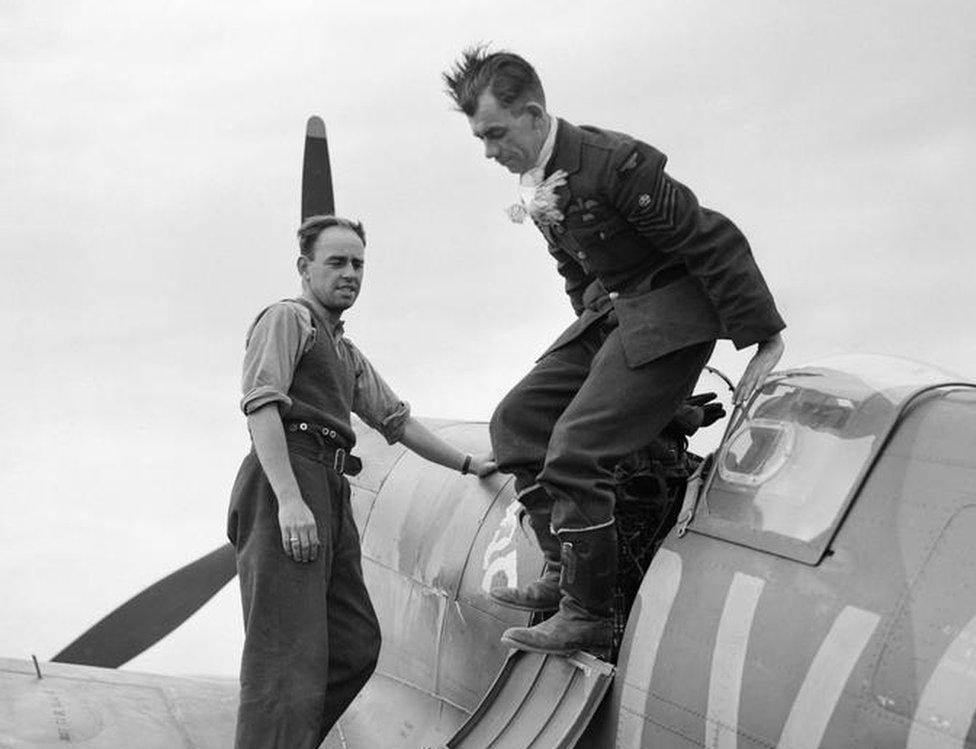
Flight Sergeant George 'Grumpy' Unwin of No. 19 Squadron climbs out of his Spitfire at Fowlmere after a sortie in September 1940

Spitfire Mk VIII MT928, manufactured in 1944, was sent to Australia, where it was kept in storage for nearly 50 years
Spitfire: Evolution of an Icon, external runs at IWM Duxford from 27 December to 20 February.

Find BBC News: East of England on Facebook, external, Instagram, external and Twitter, external. If you have a story suggestion email eastofenglandnews@bbc.co.uk
Related topics
- Published12 September 2021
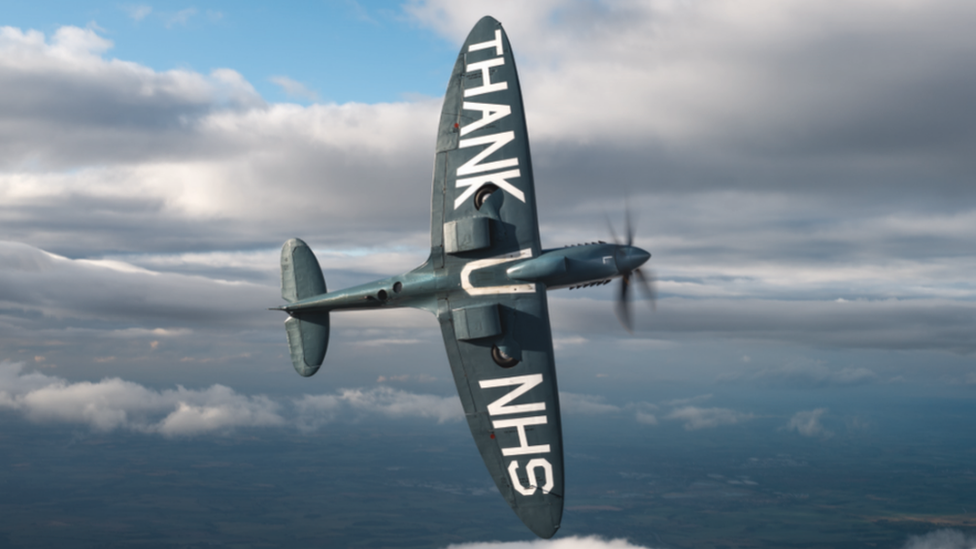
- Published19 September 2021
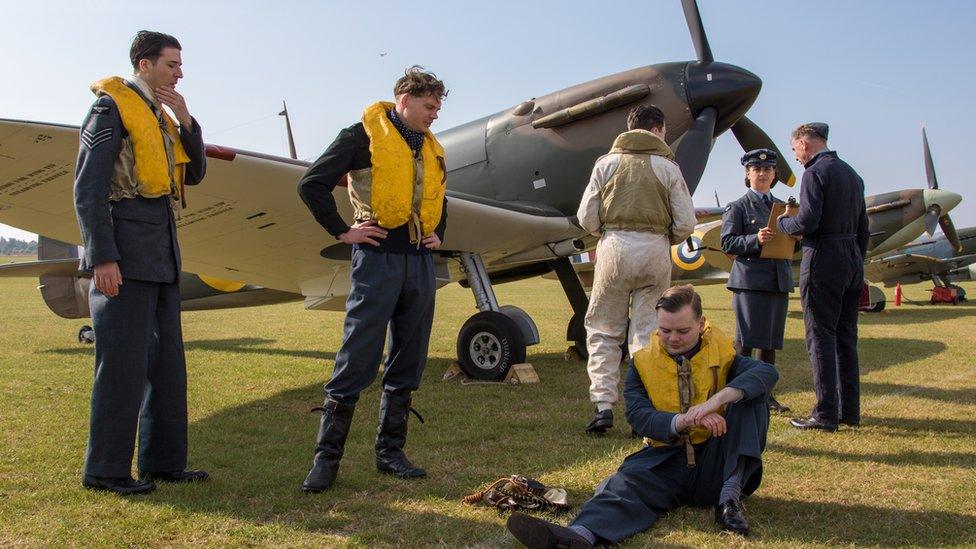
- Published24 July 2021
